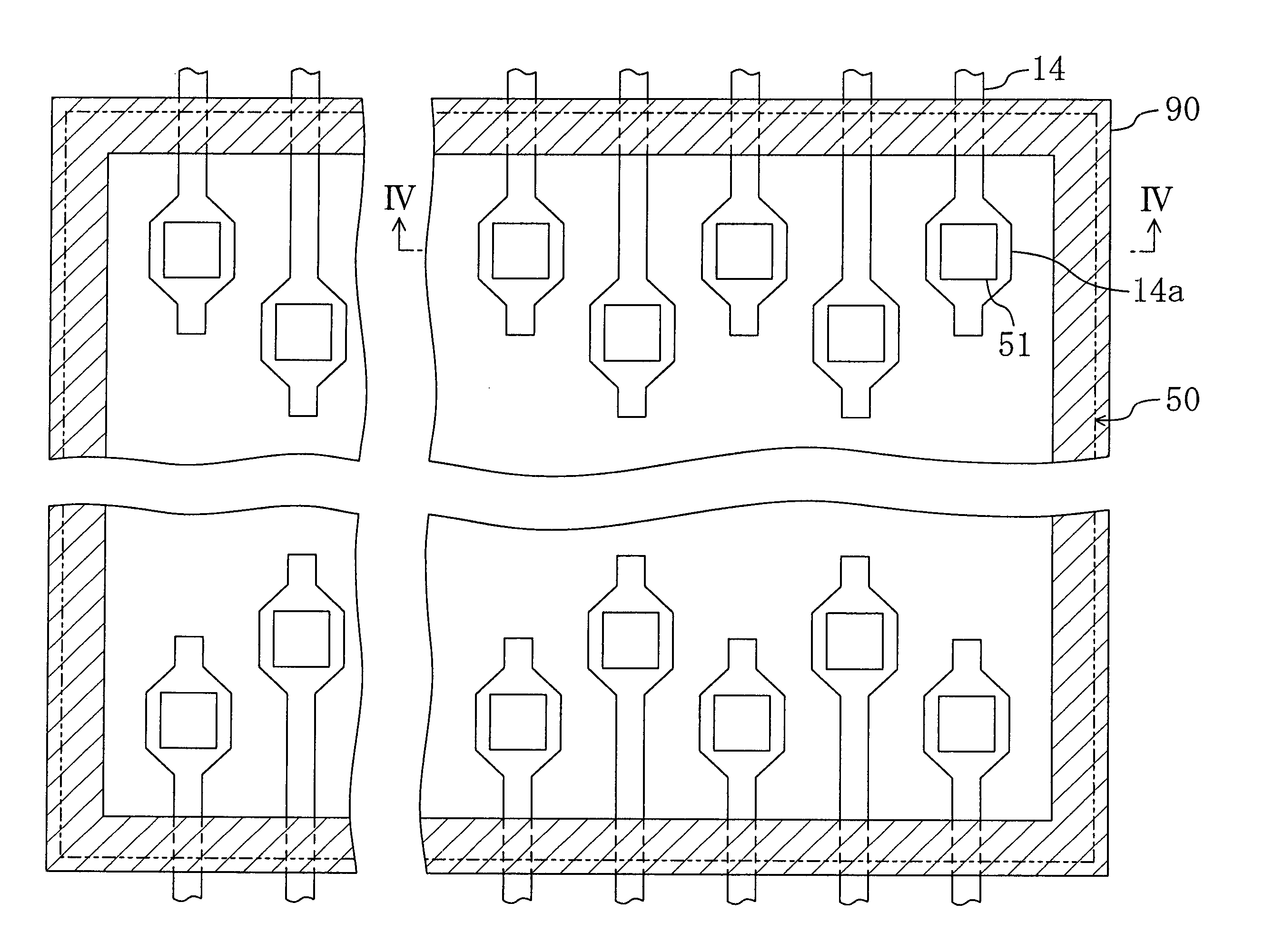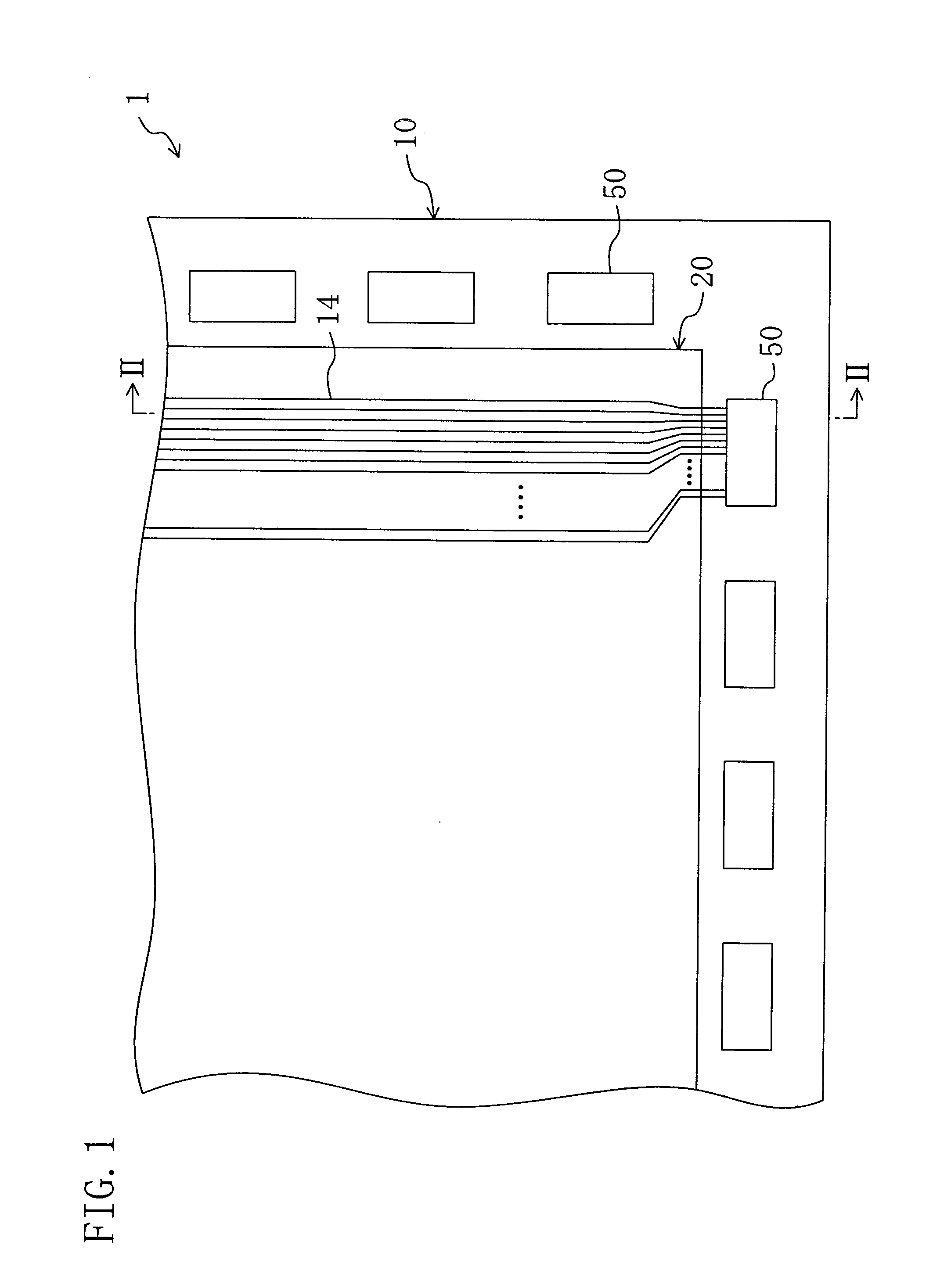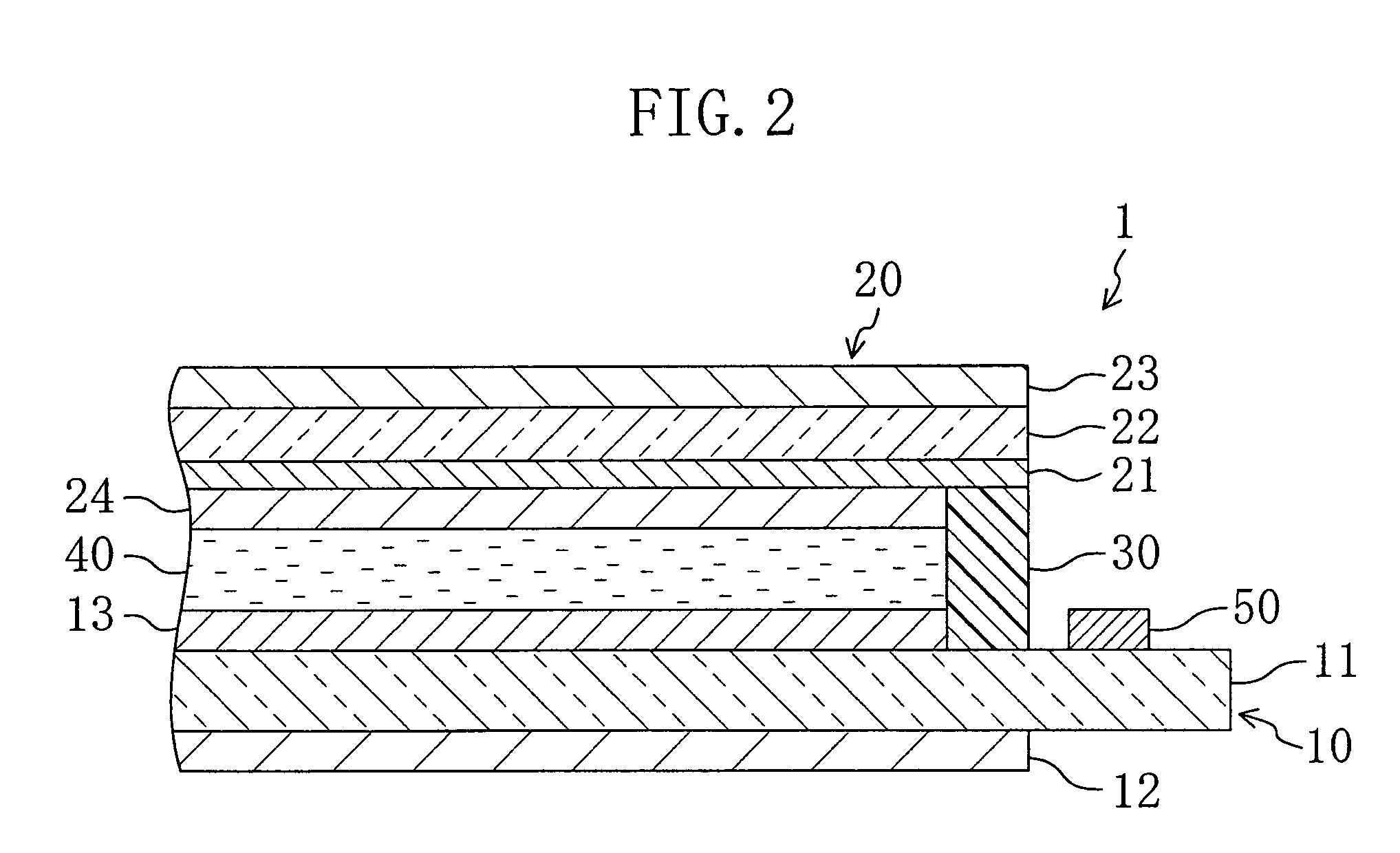Wiring substrate and display device including the same
- Summary
- Abstract
- Description
- Claims
- Application Information
AI Technical Summary
Benefits of technology
Problems solved by technology
Method used
Image
Examples
first preferred embodiment
[0066]FIG. 1 is a plan view of a liquid crystal display device 1 according to a first preferred embodiment of the present invention. FIG. 2 is a cross-sectional view taken along line II-II in FIG. 1.
[0067]The liquid crystal display device 1 according to the first preferred embodiment preferably includes an active matrix substrate 10, a counter substrate 20 facing the active matrix substrate 10, a liquid crystal layer 40 interposed between the active matrix substrate 10 and the counter substrate 20 as a display medium layer, and a seal member 30 bonding the active matrix substrate 10 and the counter substrate 20 to each other and sealing the liquid crystal layer 40.
[0068]The active matrix substrate 10 has a first substrate 11 made of plastic or glass and a first polarizing plate 12 provided on the opposite side to the liquid crystal layer 40 on the first substrate 11. A plurality of gate lines and a plurality of source lines are provided on the active matrix substrate 10. The plurali...
first modification
Modification of the First Preferred Embodiment
[0087]FIG. 7 is an enlarged plan view of a region around a driving IC chip 50 of a liquid crystal display device according to a first modification of the first preferred embodiment of the present invention.
[0088]As shown in FIG. 7, a support member 90 having a substantially rectangular cylindrical shape may be provided between each of the four corners of the driving IC chip 50 and the active matrix substrate 10. With this structure, the support member 90 does not overlap the wirings 14 and unnecessary pressure application to the wirings 14 can be suppressed.
second modification
Modification of the First Preferred Embodiment
[0089]FIG. 8 is an enlarged plan view of a region around a driving IC chip 50 of a liquid crystal display device according to a second modification. For convenience of explanation, bump electrodes 51 and wirings 14 are not shown in FIG. 8.
[0090]As shown in FIG. 8, the support member 90 may be provided between at least a portion of the periphery of the driving IC chip 50 and the active matrix substrate 10. With this structure, the support member 90 can be prevented from inhibiting the flow of an insulating resin during formation of the anisotropic electrically conductive layer 60.
PUM
 Login to View More
Login to View More Abstract
Description
Claims
Application Information
 Login to View More
Login to View More - R&D
- Intellectual Property
- Life Sciences
- Materials
- Tech Scout
- Unparalleled Data Quality
- Higher Quality Content
- 60% Fewer Hallucinations
Browse by: Latest US Patents, China's latest patents, Technical Efficacy Thesaurus, Application Domain, Technology Topic, Popular Technical Reports.
© 2025 PatSnap. All rights reserved.Legal|Privacy policy|Modern Slavery Act Transparency Statement|Sitemap|About US| Contact US: help@patsnap.com



